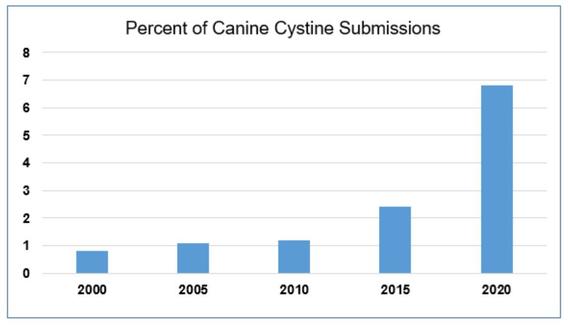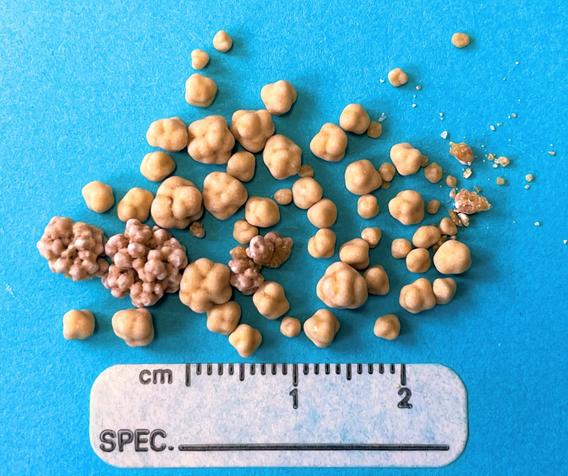Image of the month
Cystine increasing
Canine cystine is on the rise. In 2000, cystine uroliths were uncommon (0.8 %). In 2020, the number of cystine submissions octupled (6.8%)!


Cystine is an amino acid that is filtered in urine and reabsorbed by the renal tubules (i.e. removed cystine from the urine). Cystine uroliths result from high urine cystine levels due to cystine transportation defects in renal tubules. The defect has been identified in several genes (autosomal recessive-SLC3A1 in Labradors, Newfoundlands, and Landseers, autosomal dominant-SLC3A1 in Australian Cattle dogs, autosomal dominant-SLC7A9 in the Miniature Pinschers, and sex linked/androgen responsive in Mastiffs, English and French Bulldogs). These breeds can be genetically tested (research.vet.upenn.edu/penngen). Many breeds without an available genetic test have androgen-responsive cystinuria. To determine if dogs with cystine uroliths have androgen-responsive cystinuria, measure urine cystine (UC Davis Amino Acid Laboratory) and urine creatinine (at your routine lab) before and three months after castration. In androgen-responsive dogs, the cystine to creatinine ratio drops significantly at the three-month recheck.
Learn more about cystine (Canine Cystine Uroliths and supplemental information and Why you see them, why you don't (about radiographs and uroliths))
See also Step by Step: Risk Management for Canine Cystine Uroliths Image of the Month, Feb 2023